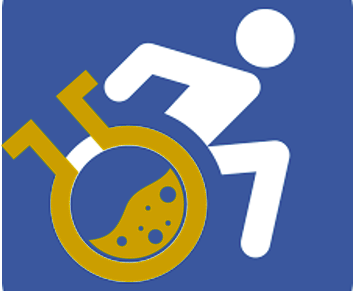
Female and PoC authors get cited less.
When journalists seek scientists to comment on stories, they often turn to the same list of usually white men.
A related topic is who gets invited to give talks at conferences.
There are several people on Twitter regularly calling out mostly male meetings and Jonathan Eisen once gave a talk where he intentionally cited female scientists’ work throughout his talk as a quite way to combat gender bias at the (mostly male) conference he was attending.
But it can be hard to find people to cite and elevate. I [Ian] was working on a project recently and I had a noble goal: get a contribution from a scientist on every continent. I know scientists in North America, South America, Europe, Australia, and Asia, but few to none in Africa. These are of course, massive geographic regions full of diverse nations, cultures, etcetera and yet I didn’t quite succeed in my goal despite putting in some effort (not enough, it turns out). Africa and Australia went without a contributor in my small project, largely due to time.
Doing that project, as well as this twitter conversation
got me thinking about how many scientists may often look right past the author section (or at least barely note it) and move right onto the content of an article to see if it’s relevant to their research and whether to cite it or not. We likely read more than we ever end up citing in a final grant or paper. However, that part of skipping over the authors may bias citations towards men, given they remain the majority in STEM fields, especially senior authors.
We must be intentional in who we cite and elevate. We’re all busy and rushing through things to get our papers and grants done – and that haste can easily lead to ignoring diversity of citation and acknowledgement. Passive citing because scientists are in a hurry, combined with men’s greater tendency to self-promote, may still result in a solid reference list – but may lack full representation of who does science.
How can we bring more intention in citing women and people of color, and better access the diverse perspectives they bring to the published literature? How do we find them as experts to contact and seek comment from as science writers?
This isn’t a new discussion. There are lists and databases out there (see links above) and more than just Jonathan Eisen (@phylogenomics) and Summer Ash (@Summer_Ash) speaking up about it.
For a place to start finding the diversity that does exist in STEM, There’s (tactfully) asking on social media – where a panoply of diverse scholars are quite active (e.g. #WomenInSTEM, #BlackAndSTEM, #disabledandSTEM or just start listening to conversations about science on Twitter and other social media, diverse scholars are there too talking about their expertise and areas of interest). Or listen to The Story Collider who feature diverse scientific voices (as well as non-scientists who have stories about science has impacted their lives/experiences).
It’s still worth having this discussion to signal boost the resources that do exist and hearing how scientists ensure diverse citation, speaker lists, and expertise is heard.
Deadlines for conferences may need to be well off in the future so active recruiting of a diverse speaker/attendee list can be obtained. Similarly with faculty searches and encouraging women and PoC to apply to your university may be a necessary step. Last, Jonathan Eisen’s technique of citing women in STEM in his talk may be most effective of all. It subtly plants the seeds of under-represented scientists who might be invited to give future talks to those watching in the audience. Eisen had to be intentional in doing that. And so another layer of creating any kind of scientific work should be designing in diversity of citation as well as good writing, craft, and visual design.
Join us to discuss Citation Blindness on our next #DiversityJC September 28, Thursday night at 9pm ET/8C. ***Special day/time this month***
Hope to see you all there.



 We are living in an era of
We are living in an era of 
 March was #WomanHistoryMonth, so we chose an article from the Guardian to discuss
March was #WomanHistoryMonth, so we chose an article from the Guardian to discuss